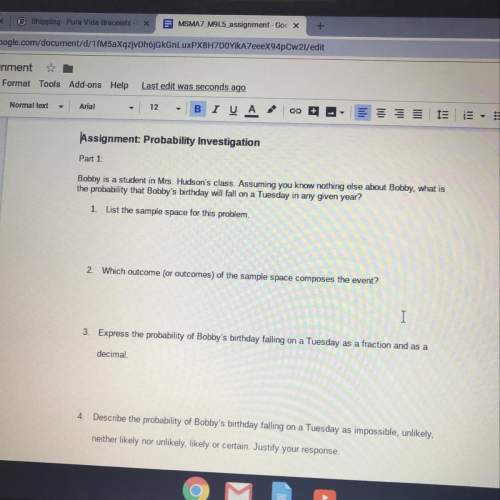
Mathematics, 04.02.2020 21:54 chilanka
Suppose you want to prove a theorem of the form p → (q ∨ r). prove that this is equivalent to showing that (p ∧ ¬q) → r.
p → (q ∨ r) ≡ ¬p ∨ (q ∨ r)implication rule
≡ (¬p ∨ q) ∨ rassociative rule
≡ ¬(p ∧ ¬q) ∨ rㅤㅤㅤ ㅤ how did i get this?
≡ (p ∧ ¬q) → rimplication rule
what rule was used to get ¬(p ∧ ¬q) ∨ r from (¬p ∨ q) ∨ r ?

Answers: 3


Another question on Mathematics

Mathematics, 21.06.2019 21:00
Isabel graphed the following system of equations. 2x – y = 6 y = -3x + 4 she came up with the solution (2,-2). what were the 3 steps she did to get that solution? (make sure they are in the correct order)
Answers: 2

Mathematics, 21.06.2019 23:30
Abaseball team drinks 10/4 gallons of water during a game. which mixed number represents the gallons of water consumed? a) 1 1/2 gallons b) 2 1/2 gallons c) 2 3/4 gallons d) 3 1/2 gallons
Answers: 2

Mathematics, 22.06.2019 00:00
Which choice names the hypotenuse of triangle xyz? a. segment yx b. segment yz c. segment ab d. segment zx
Answers: 3

Mathematics, 22.06.2019 02:00
Tanyss's house has 25 windows. her brother has washed 22 of the windows. what percent of the windows has her brother washed?
Answers: 1
You know the right answer?
Suppose you want to prove a theorem of the form p → (q ∨ r). prove that this is equivalent to showin...
Questions

English, 30.06.2019 02:40








Mathematics, 30.06.2019 02:40







World Languages, 30.06.2019 02:40

History, 30.06.2019 02:40

History, 30.06.2019 02:40

Mathematics, 30.06.2019 02:40

 part.
part.
 is improper, I was just stressing the fact that we distributed the negation to every term in the parenthesis. So, since a double negation cancels out, you're left with
is improper, I was just stressing the fact that we distributed the negation to every term in the parenthesis. So, since a double negation cancels out, you're left with

 from
from  , you simply have to negate the first parenthesis and distribute the negation as discussed.
, you simply have to negate the first parenthesis and distribute the negation as discussed.


